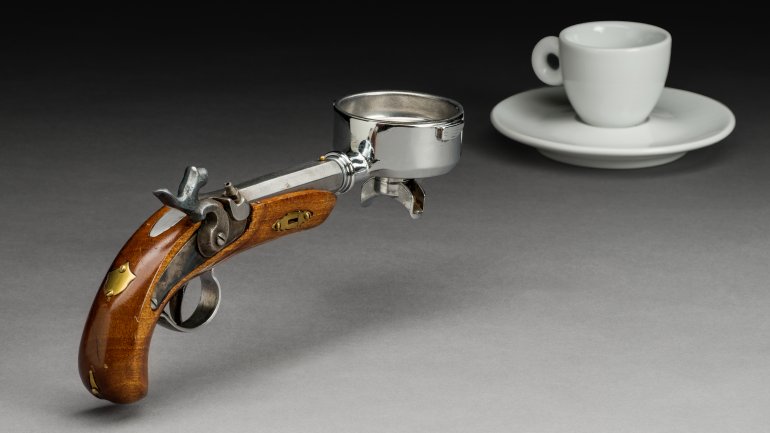"IMAGINE Peace Now" Exhibition
A show takes aim at gun violence.
The months after the Sandy Hook massacre in 2012 were dark days for gun-safety advocates. Congress couldn’t pass even a modest gun-safety law, despite the wholesale slaughter of first-graders and their teachers by a shooter wielding an AR-15. An air of resignation – indeed, almost a pall of despair – settled over advocates; if this couldn’t change public and political opinion, what could?
But in 2016, after another mass shooting, metalsmith Boris Bally decided he couldn’t stand idly by. In a leap of faith, he and fellow metalsmiths, including Tim McCreight, Sue Amendolara, and Don Friedlich, decided that, as artists, it was time to act.
Thus began the traveling exhibition “IMAGINE Peace Now.” Bally had mounted a similar show in 1996. This one gave artists one stipulation: Use a decommissioned gun (or its parts) from community buy-back programs in an original piece of art. The show, in a slimmer, more distilled version, is now in St. Louis through May 13, sponsored by the Craft Alliance Center of Art + Design and Maryville University. (This was originally to be its final stop, but Radius Gallery in Santa Cruz, California, now has plans to host the show, scheduled to open in mid-October.)
With such a wide purview, the works in the show vary widely; the show attracted a who’s who of contemporary artists, such as Joyce J. Scott, Hoss Haley, Arthur Hash, and Stacey Lee Webber. In some pieces, the gun remains recognizable, incorporated into objects that may carry a message of anger, sorrow, horror, even, sometimes, wit. In others, it’s barely visible or disassembled into its component, or, in a few cases, seemingly has been disappeared, the material recast into wholly new forms.
Some artists had never seen an actual gun before; others were longtime gun-owners. In fact, Bally himself bought a gun. (“I thought it was hypocritical not to become a gun-owner.”) All, however, endorse common-sense gun laws.
Bally has found that show has not only raised awareness – a worthy, but often all-too-nebulous goal – but also produced more tangible, “real-world” results. A portion of the proceeds goes to various gun-safety organizations (as well as SNAG, which provided crucial support, Bally says). Moreover, Bally and other artists have gotten involved in various national and local efforts, such as lobbying at state legislatures. “To feel like I’m really accessing the community, motivating them to become active, has been really rewarding,” he says.
Though Bally and compadres might have felt like a voice in the wilderness when the show began, in recent months, he, like many, he has been astonished and heartened by the extraordinary response of the Parkland massacre survivors and the accompanying groundswell of public action. In the end, the show may prove to be less last gasp than harbinger.

